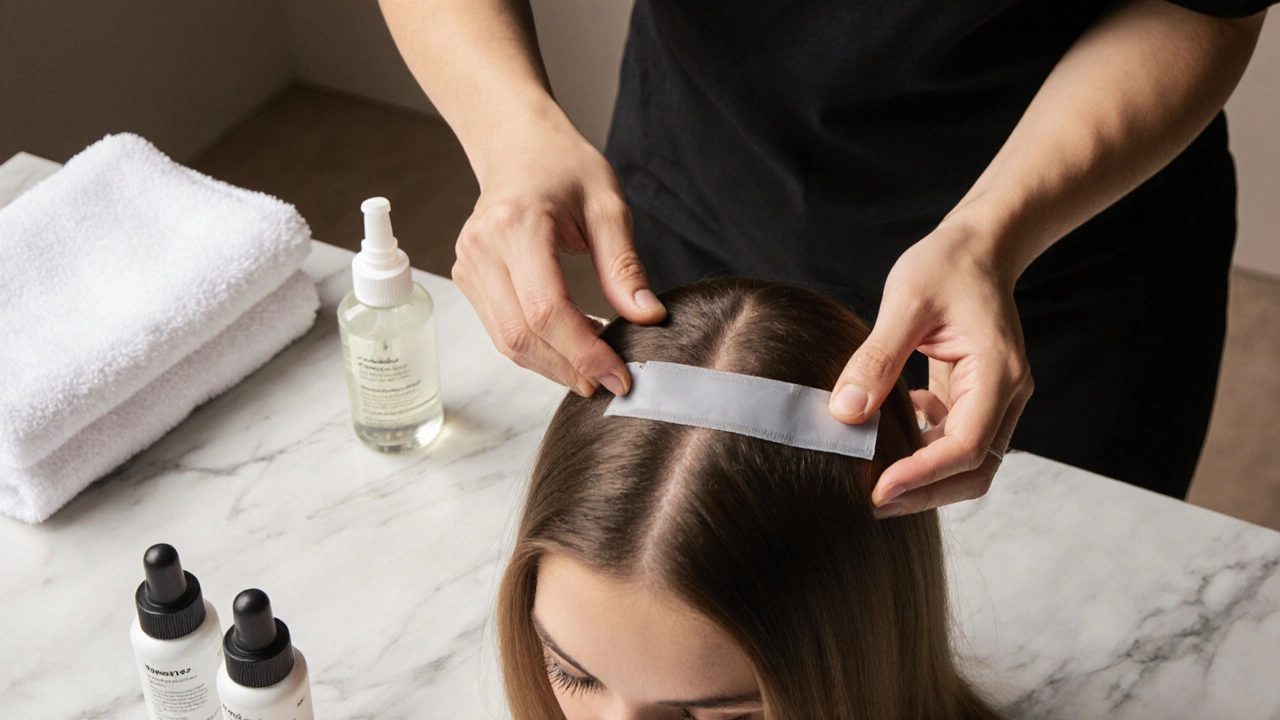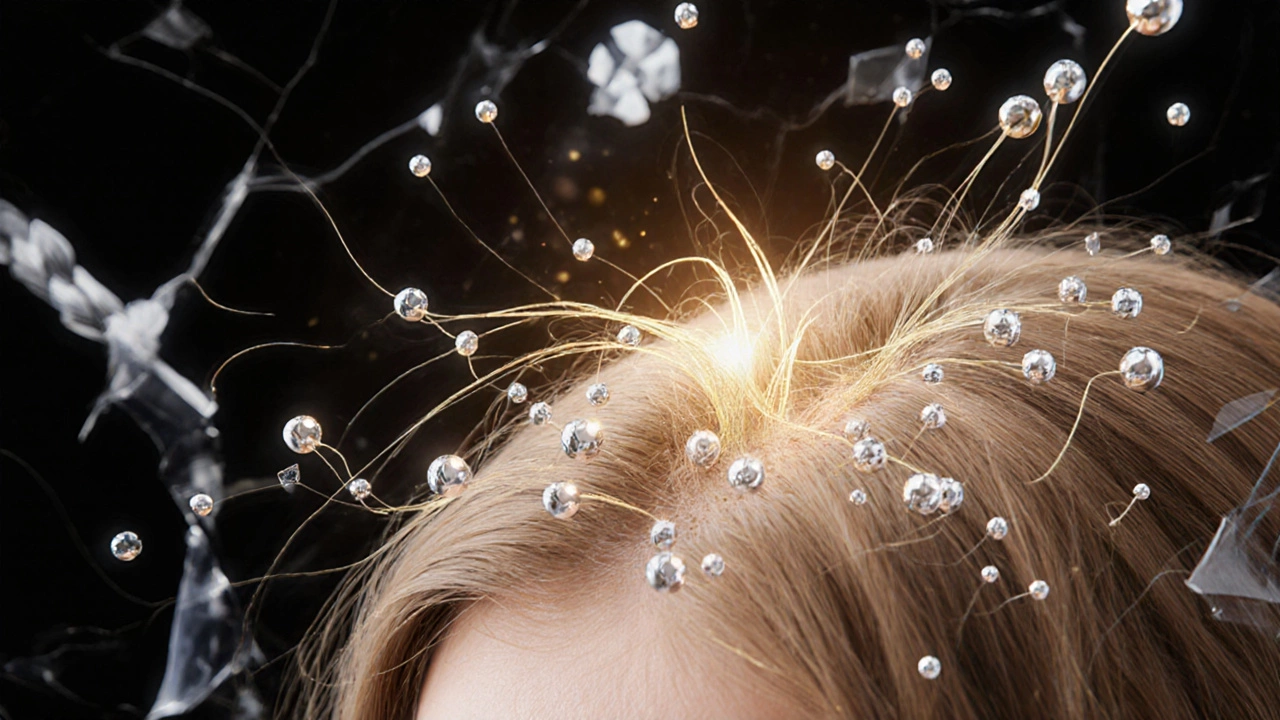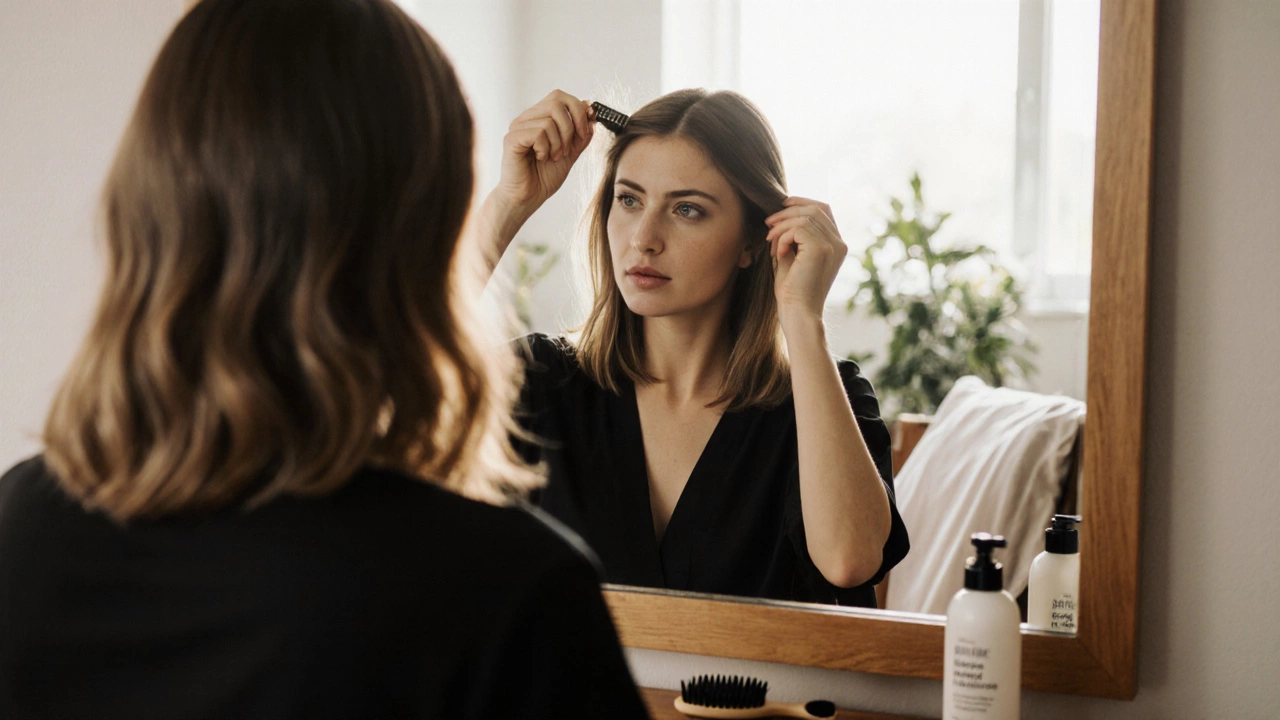Hair Extension Damage Calculator
How to Use This Tool
Answer a few quick questions about your hair and extension needs to see which extension type is safest for you. The calculator compares damage risk and shows recommendations based on your answers.
Answer Your Questions
Your Results
Damage Risk Level
Best Option:
Key Considerations
Why This Option Is Safest
If you’re thinking about hair extensions but worried about damaging your natural hair, you’re not alone. Many people want longer, fuller hair without the breakage, thinning, or scalp irritation that can come with bad installations. The truth is, not all hair extensions are created equal. Some are gentle. Others? They’re basically hair glue traps waiting to pull your strands out by the roots. So what’s the least damaging option? It’s not one-size-fits-all-but there are clear winners based on how they’re applied, how long they last, and how much stress they put on your scalp and strands.
Clip-in extensions are the safest bet for most people
Clip-in extensions are the easiest, most non-invasive option you can choose. They’re held in place with small, discreet metal clips that attach to your natural hair. No glue, no heat, no sewing, no beads. You put them in before an event, take them out when you’re done, and your hair stays exactly as it was. No long-term commitment. No chemical exposure. No tension on the follicles.
They’re ideal if you’re new to extensions, have fine or fragile hair, or just want to try them out without risking damage. A good pair of clip-ins lasts for years if you treat them right-wash them gently, brush them from the ends up, and store them flat. Brands like Bellami and Kinky Curly offer high-quality human hair clip-ins that blend naturally and don’t tug. Even if you wear them daily, as long as you don’t sleep in them or pull them too tight, your hair stays healthy.
Real-world tip: If your natural hair is shoulder-length or longer, clip-ins add volume without looking obvious. If you’re shorter, choose 10-12 inch pieces to avoid an unnatural waterfall effect.
Tape-in extensions are a close second-if done right
Tape-in extensions use thin wefts bonded to your hair with medical-grade adhesive. They’re lighter than other methods and lay flat against the scalp, making them less noticeable than sewn-in or beaded options. They last about 6-8 weeks and are repositioned every 6-8 weeks as your hair grows.
Here’s the catch: the damage comes from improper removal. If the stylist uses the wrong solvent or pulls too hard, you can lose strands. But when installed and taken out by a trained professional using a bond-specific remover, tape-ins cause minimal stress. The key is choosing high-quality, 100% human hair tape-ins and avoiding the cheapest options-those often use synthetic fibers or low-grade glue that melts under heat and tangles easily.
Studies from the Journal of Clinical and Aesthetic Dermatology show that tape-in extensions cause significantly less traction alopecia than weaves or braids. They’re also easier to maintain than micro-beads because you don’t need to wash around tiny metal rings. Just avoid heavy oils or silicone-heavy products near the bonds-they can loosen the adhesive.
Micro bead extensions can be gentle-but only if you’re careful
Micro bead (or micro link) extensions use tiny metal rings to clamp a small section of your natural hair to the extension strand. They’re popular because they look very natural and can be reused. But they’re also the most misunderstood.
When done correctly, they’re low-damage. The ring holds the hair without glue, and the weight is distributed across multiple tiny points. But here’s where people go wrong: they leave them in too long (over 3 months), don’t get them tightened as hair grows, or let a stylist use metal tools that cut into the scalp. That’s when breakage and thinning happen.
Best practice? Get them installed every 6-8 weeks, avoid sleeping with them wet, and use a soft-bristle brush to detangle from the ends upward. Also, make sure your stylist uses aluminum or silicone-coated rings-not stainless steel. Steel rings can rust and irritate the scalp over time.

Why sew-in weaves and glue-ins are risky
Even though they’re common, sew-in weaves and glue-in extensions are the top culprits behind hair loss from extensions. Sew-ins involve braiding your natural hair into tight cornrows, then sewing wefts onto the braids. The tension pulls on your follicles day and night. Over time, this causes traction alopecia-a type of hair loss that’s often permanent.
Glue-ins are even worse. The adhesive sits directly on your scalp, clogging pores and weakening hair shafts. Many glues contain formaldehyde or other harsh chemicals that cause itching, redness, and flaking. Even if you don’t feel pain during installation, the slow damage builds up. A 2023 survey of 1,200 women in the U.S. and Australia found that 38% of glue-in users reported noticeable thinning after 6 months.
These methods also make it hard to properly wash or condition your scalp. Dirt and oil build up, leading to dandruff and folliculitis. If you’ve had a sew-in or glue-in before and noticed your hairline receding or your scalp feeling tight, it’s not normal. It’s a warning sign.
What to look for in quality extensions
Even the safest method won’t save you if the hair itself is low quality. Here’s what to check before buying:
- 100% Remy human hair-This means the cuticles are aligned in one direction, reducing tangling and giving a natural shine. Non-Remy hair is often stripped and chemically processed, making it brittle.
- No synthetic fibers-Synthetics melt under heat, look shiny under light, and don’t blend well. If the price seems too good to be true, it probably is.
- Weight matters-Heavy extensions pull more. For fine hair, stick to 80-120 grams total. For thick hair, 140-180 grams is fine.
- Color matching-Go for a shade slightly lighter than your roots. Darker extensions look fake, especially in sunlight.
Also, avoid extensions labeled “virgin” unless you can verify the source. Many sellers misuse the term. Real virgin hair comes from a single donor, unprocessed, and untreated with chemicals.

How to protect your hair while wearing extensions
Even the gentlest extensions can cause damage if you ignore basic care. Here’s how to keep your hair healthy:
- Wash your scalp every 2-3 days, even if you have extensions. Buildup weakens roots.
- Use sulfate-free shampoo and a lightweight conditioner. Avoid heavy oils near bonds or clips.
- Brush gently with a wide-tooth comb or detangling brush. Start from the ends and work up.
- Never sleep with extensions in unless they’re clip-ins and you’re using a silk pillowcase.
- Give your hair a break every 2-3 months. Let it breathe for at least 2 weeks between wears.
- Use a leave-in conditioner with panthenol or biotin to strengthen natural hair underneath.
Many people think extensions are a set-and-forget solution. They’re not. They’re like a temporary hairstyle that still needs care. Treat your natural hair like the foundation-it’s the most important part.
What’s the bottom line?
For the least damaging hair extension type, clip-ins win. They’re removable, reusable, and put zero stress on your scalp. If you want something more permanent, tape-ins are the next best option-as long as you get them installed and removed by a pro.
Stay away from sew-ins and glue-ins unless you’re prepared for long-term damage. And always invest in real human hair. Cheap extensions don’t just look bad-they actively harm your hair over time.
The goal isn’t just to have longer hair. It’s to have healthy, strong hair for years to come. Choose wisely, care for it, and your natural hair will thank you.
Are clip-in extensions really safe for thin hair?
Yes, clip-ins are the safest option for thin hair because they don’t require bonding, sewing, or heat. They sit on top of your hair without pulling on the roots. Just avoid heavy wefts-choose lightweight, 80-100 gram sets-and don’t wear them daily without giving your scalp a break. Brush gently and remove them before bed.
Can tape-in extensions cause hair loss?
Tape-ins can cause hair loss if they’re left in too long, applied too tightly, or removed improperly. But when installed by a trained stylist and maintained every 6-8 weeks, they’re one of the least damaging options. The key is using a bond-specific remover and never yanking them out. If you notice shedding around the tape area, it’s time for a removal and scalp check.
How often should I replace my hair extensions?
High-quality human hair extensions can last 6 months to a year with proper care. Clip-ins and tape-ins can be reused multiple times if washed gently and stored flat. Micro beads may need reinstallation every 6-8 weeks as your hair grows. Always inspect for tangling, dryness, or fraying-once the hair starts looking dull or brittle, it’s time to replace them.
Do extensions stop your hair from growing?
No, extensions don’t stop your hair from growing. Hair grows from the follicle, not the strand. But if extensions are too tight or left in too long, they can cause traction that leads to breakage or follicle damage-which looks like slower growth. Healthy hair continues to grow under extensions. The issue is protecting the strands from stress and breakage.
Is it okay to sleep with clip-in extensions?
It’s not recommended. Sleeping with clip-ins can cause tangles, breakage, and even pull your natural hair out. The clips can dig into your scalp, leading to irritation or headaches. If you must sleep in them occasionally, braid your hair loosely first and use a silk pillowcase to reduce friction. But removing them nightly is the best practice.
What’s the best way to wash hair extensions?
Wash extensions in cool or lukewarm water using sulfate-free shampoo. Gently massage the shampoo into the hair-don’t scrub the clips or bonds. Rinse thoroughly, then apply conditioner only to the mid-lengths and ends. Let them air dry on a towel, never use a blow dryer on high heat. Brush them gently with a wide-tooth comb once they’re 80% dry.
